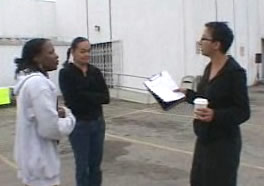 |
 |
 Alternatives to Polling
Alternatives to Polling Extensive polling is the standard professional method of arriving at the most broadly effective message, and all responsible consultants and knowledgeable donors will tell you it’s the only way to go. Their reasoning is sound; it makes sense that you need to understand people’s attitudes in order to convince them to agree with you.
But, as we’ve said before, polls can be full of traps for community groups. Not to mention that, for most projects, their cost rules them out. The good news is that there are numerous alternatives to polling that are actually more effective for the purposes of most organizations’ electoral projects.
A case in point is SCOPE’s five-step process for message development, which Anthony Thigpenn describes in the video. It goes like this:
The process is time-consuming but inexpensive and effective. The product is a message that’s generated by the organization and tested by membership, lead volunteers and voters. As an added benefit, a group of core volunteers gets early practice with going door to door with the message. When the campaign is under way, they can share the lessons they learned from the trial run with other precinct walkers.
If you’re project is not at so large a scale as those run by SCOPE, you may not need to test the message all of three times. SouthWest Organizing Project, Robby Rodriguez says, invites folks who aren’t particularly politically-minded to participate in focus groups that the organization puts on in-house. Though informal and relatively simple, they accomplish what a poll cannot: organizers get a chance to practice the delivery of the message and get direct feedback from people who very closely resemble their targeted demographic.